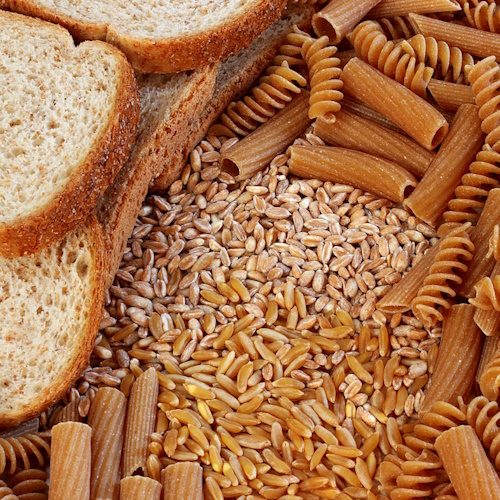In the modern world, we often associate ageing with decline—fading energy, increasing illness, and a gradual withdrawal from active life. But there are places on Earth where this narrative is turned upside down. In these unique regions, people live into their 90s and even 100s with remarkable vitality. What makes these communities stand out is not just how long they live, but how well they live.
These exceptional areas are known as Blue Zones. From the sun-washed hills of Ikaria, Greece, to the subtropical shores of Okinawa, Japan, residents of these zones are often free from the chronic conditions that plague other parts of the world. While lifestyle, community, and genetics all play a role, researchers are increasingly turning their attention to something that may be even more influential: what they eat.
A Closer Look at the Blue Zones
The Blue Zones include five distinct regions: Okinawa (Japan), Sardinia (Italy), Ikaria (Greece), Loma Linda (California), and Nicoya (Costa Rica). These are places where age is not synonymous with illness. While diverse in culture and geography, these communities share a number of lifestyle features that contribute to their residents' longevity—and one of the most compelling is a diet rich in plant-based foods.
But it's not just about fruits and vegetables in general. Scientists have begun to explore the role of polyphenols, naturally occurring compounds found in many plant foods, which may play a powerful role in supporting the biological processes that keep ageing at bay.
Understanding Polyphenols and Their Unique Properties
Polyphenols are chemical compounds found in foods like berries, tea, olive oil, and legumes. They have attracted attention for their potential effects on health, especially in relation to inflammation, oxidative stress, and cellular ageing. These compounds interact with biological systems in a variety of ways, some of which may reduce the risk of chronic conditions such as heart disease, diabetes, and certain neurodegenerative disorders.
Not all polyphenols are the same. They exist in several classes including flavonoids, phenolic acids, stilbenes, and lignans. Each type behaves differently in the body and can be found in different types of food. In Blue Zone diets, polyphenols are consumed daily—often unknowingly—through traditional meals passed down through generations.
Traditional Foods That Pack a Nutritional Punch
Take Okinawa, for example. Long known for the longevity of its population, the island’s traditional diet is filled with foods such as purple sweet potatoes, soy-based dishes like tofu and miso, and turmeric tea. These items contain anthocyanins, isoflavones, and curcumin—each of which is a rich source of polyphenols. While Okinawa has seen some dietary shifts in recent years, older generations still stick to their roots.
In Sardinia, meals often include vegetables cooked in olive oil, alongside modest servings of a local red wine known as Cannonau. This wine is especially rich in flavonoids such as procyanidins, thought to support vascular health. Meanwhile, coffee—another staple—adds chlorogenic acid to the mix, a compound being studied for its effects on metabolism and blood sugar regulation.
Ikaria’s Plant-Powered Tradition
Moving to Ikaria, Greece, one finds a community where the Mediterranean diet has deep roots. Olive oil, wild greens, and herbal teas form the backbone of daily eating habits. Many of these plants contain oleuropein, apigenin, and chlorogenic acids, all polyphenols known for their antioxidant effects.
Interestingly, residents of Ikaria also regularly consume a tea made from the Sideritis plant—sometimes referred to as mountain tea. It is high in polyphenols that may support brain health and mood. Together with a diet based on lentils, onions, and fresh vegetables, this approach contributes to what some researchers describe as a delayed onset of age-related diseases.
How Diet Impacts Ageing at the Cellular Level
Ageing isn’t just about appearances or how many candles are on the cake. It’s a process deeply tied to what happens inside the body—down to the cellular level. Scientists have outlined several biological changes, often called the hallmarks of ageing, that contribute to deterioration over time. These include genomic instability, loss of protein control, cellular wear, and decreased energy production in cells.
Polyphenols may influence several of these areas. Some types have been shown to help protect DNA from damage. Others enhance the function of mitochondria—the energy factories of cells—or support the recycling of damaged cellular components through a process known as autophagy. By engaging with these critical pathways, polyphenols may help slow the progression of age-related decline.
The American Example: Loma Linda
Unlike the other Blue Zones, Loma Linda in California stands out for being situated in an otherwise urbanized setting. Its residents, many of whom are members of the Seventh-day Adventist community, live significantly longer than the average American. One of the reasons appears to be diet.
The Adventist community largely follows a vegetarian lifestyle. Their meals are abundant in fruits, legumes, nuts, and soy products—all foods high in various types of polyphenols. Research from health studies involving thousands of Adventists suggests that their dietary habits are linked to a lower risk of heart disease, certain cancers, and metabolic issues.
Nicoya: Simplicity and Nutritional Density
In the Nicoya Peninsula of Costa Rica, longevity is tied closely to traditional eating patterns. Meals are simple but powerful: black beans, squash, rice, papaya, and mango. These foods may seem basic, but they are dense in nutrition and rich in beneficial compounds.
Mangoes, for instance, contain a type of polyphenol called mangiferin. Beans, especially the black variety, contain anthocyanins and flavonols. These compounds not only contribute to lower inflammation but may also play a role in maintaining telomere length—a marker of cellular ageing that tends to shorten with age.
How Modern Diets Compare—and What We Can Learn
The typical modern diet, especially in industrialized nations, has shifted away from whole, plant-based foods. Highly processed meals, excessive sugar, and refined oils dominate. This shift is associated with rising rates of chronic illness and reduced life expectancy in many parts of the world.
Blue Zone communities offer a contrasting image. They show that everyday foods—when chosen wisely—can do more than satisfy hunger. They can support long-term wellbeing, protect the body from internal damage, and preserve vitality into the later decades of life.
Conclusion: A Return to Simplicity for Lifelong Vitality
What we see in the Blue Zones isn’t a miracle or secret formula—it’s the result of everyday choices made over a lifetime. Meals based on natural, unprocessed ingredients. A rhythm of life that supports movement, social engagement, and purpose. And diets filled with foods that naturally contain compounds the body can use to protect itself.
While genetics and culture play their part, the power of diet should not be underestimated. Returning to traditional, plant-based eating patterns that emphasize polyphenol-rich foods may be one of the most accessible and effective ways to age not just longer, but better.
The study is published in the journal Ageing Research Reviews. It was led by researchers from University of Molise.






